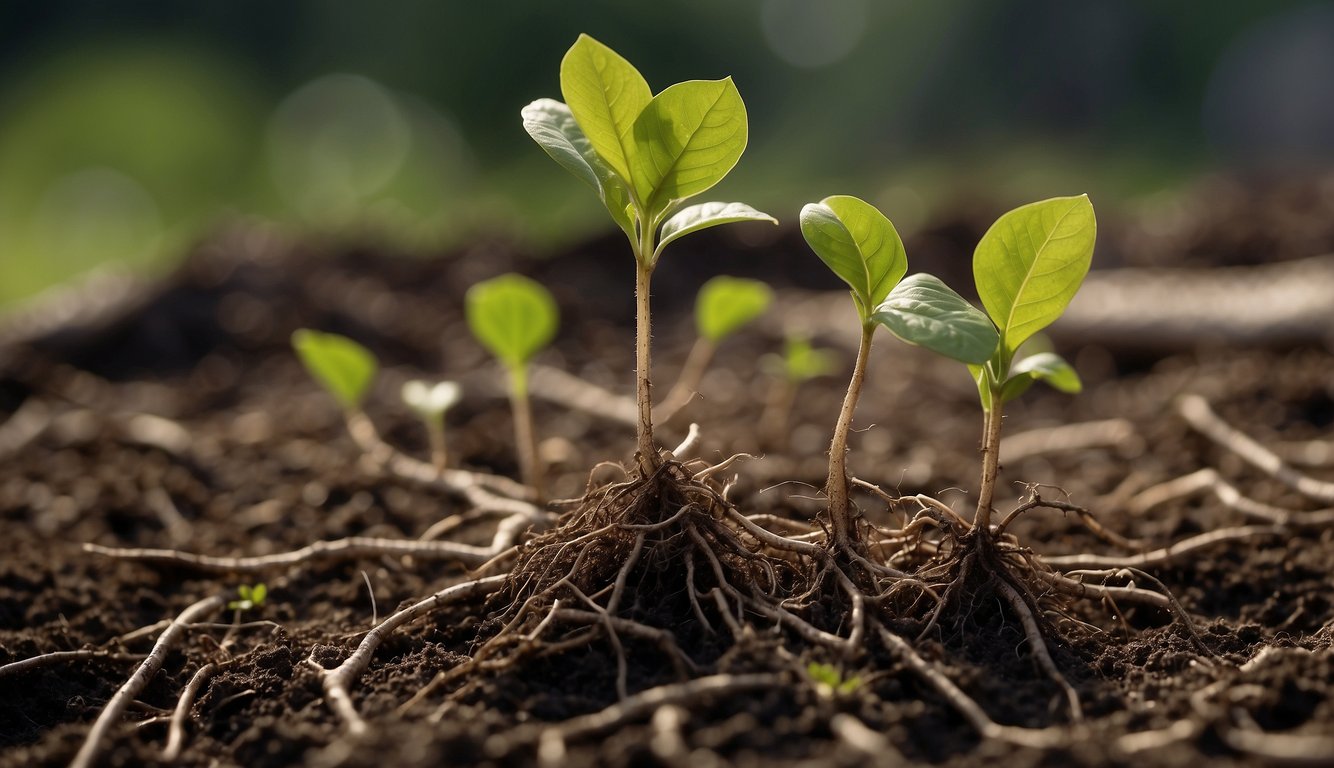TheHerbProf.com is a treasure trove of knowledge for those interested in natural healing and herbal remedies. The website is run by Paul Johnston MD. A naturopathic who has not only received extensive education in the field but also has personal experience in self-healing.
Let’s do a deep dive on Root Rot Vs Healthy Roots. Root rot is a common disease that affects many types of plants. It is caused by a variety of factors, including overwatering, poor drainage, and fungal infections. When plants are affected by root rot, their roots become weak and mushy, making it difficult for them to absorb water and nutrients from the soil. This can lead to stunted growth, yellowing leaves, and even death.
On the other hand, healthy roots are firm and plump, indicating that they are well-hydrated and able to transport water and nutrients effectively. They also exhibit branching and fibrous growth, which allows them to anchor the plant securely in the soil. Healthy roots are essential for the overall health and vitality of a plant, as they provide the foundation for growth and development. By understanding the differences between root rot and healthy roots, gardeners can take steps to prevent and treat this common problem and keep their plants thriving.
It’s important to note that root rot can be difficult to diagnose, as the symptoms can be similar to those of other plant diseases or environmental stressors. However, by paying attention to the health of your plants and taking steps to promote healthy root growth, you can help prevent root rot from taking hold. In the following sections, we will explore the causes and symptoms of root rot, as well as strategies for preventing and treating this common plant disease.
Understanding Root Rot Vs Healthy Roots
As a plant owner, it is important to understand what root rot is and how to identify it. Root rot is a fungal disease that affects the roots of plants, causing them to rot and eventually die. It is caused by various types of fungi such as Phytophthora, Fusarium, Pythium, Rhizoctonia, and Thielaviopsis. These fungi thrive in wet and poorly drained soil, making overwatering and poor drainage the main causes of root rot.
Causes of Root Rot – Root Rot Vs Healthy Roots
Root rot can be caused by a variety of factors, including overwatering, poor drainage, and soil-borne fungi. Overwatering can lead to waterlogged soil, which creates the perfect environment for fungi to grow. Poor drainage can also lead to waterlogged soil, as water is unable to drain away from the roots. Soil-borne fungi can be introduced to plants through contaminated soil or infected plant material.
Identifying Symptoms of Root Rot
The signs of root rot can vary depending on the severity of the infection. Some common signs of root rot include wilting, yellowing leaves, and stunted growth. As the disease progresses, the leaves may become discolored and fall off. When examining the roots, they may appear mushy or discolored, with a foul odor.
To prevent root rot, it is important to avoid overwatering and ensure proper drainage. Choosing well-draining soil and pots with drainage holes can help prevent water from accumulating around the roots. If root rot is suspected, it is important to remove the affected plant and soil to prevent the spread of the disease.
Understanding root rot and its causes is crucial for plant owners to maintain healthy roots. By taking the necessary precautions to prevent root rot, such as proper watering and drainage, plant owners can ensure the longevity of their plants.
How to Treat Root Rot – Root Rot Vs Healthy Roots
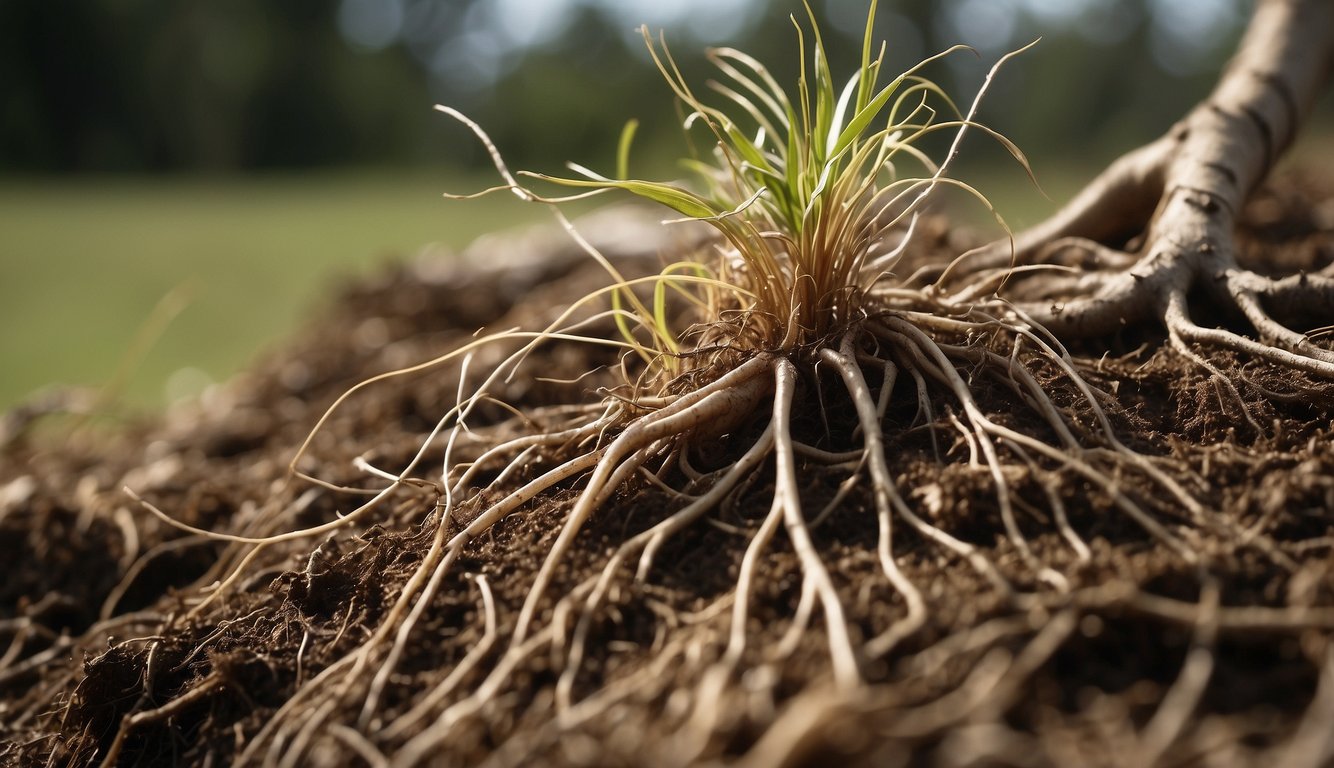
Root rot is a common disease that affects plants, especially those that are overwatered. If your plant is showing signs of root rot, such as yellowing leaves or wilting, it’s important to act quickly to treat it. Here are the steps to follow to treat root rot:
Removing the Plant from Its Soil and Inspecting Its Roots
The first step in treating root rot is to carefully remove the plant from its soil. Gently loosen the soil around the plant and carefully lift it out of its container. Once you have removed the plant from its soil, inspect the roots for signs of rot. Healthy roots are firm and white, while infected roots will be brown, black, or mushy.
Cutting Away the Rotting Portions of the Plant – Root Rot Vs Healthy Roots
Use a pair of pruning shears to cut away any rotting portions of the plant. Be sure to cut away all of the infected roots, as leaving even a small portion of infected root can cause the disease to spread. Once you have removed all of the infected roots, soak the remaining roots in a fungicide solution for at least 30 minutes. This will help to kill any remaining fungus and prevent the disease from spreading.
Repotting Your Plant with Fresh Soil
Once you have removed all of the infected roots, it’s time to repot your plant with fresh soil. Choose a potting mix that is well-draining and has good aeration. Make sure the container you choose has drainage holes to prevent water from accumulating in the soil. Fill the container with the potting mix and plant your plant, making sure to cover the roots with soil.
Treating root rot requires careful attention to detail and quick action. By removing the plant from its soil, cutting away the infected roots, and repotting it with fresh soil, you can help your plant recover from this disease. Remember to avoid overwatering your plants in the future to prevent root rot from recurring.
Understanding Healthy Roots – Root Rot Vs Healthy Roots
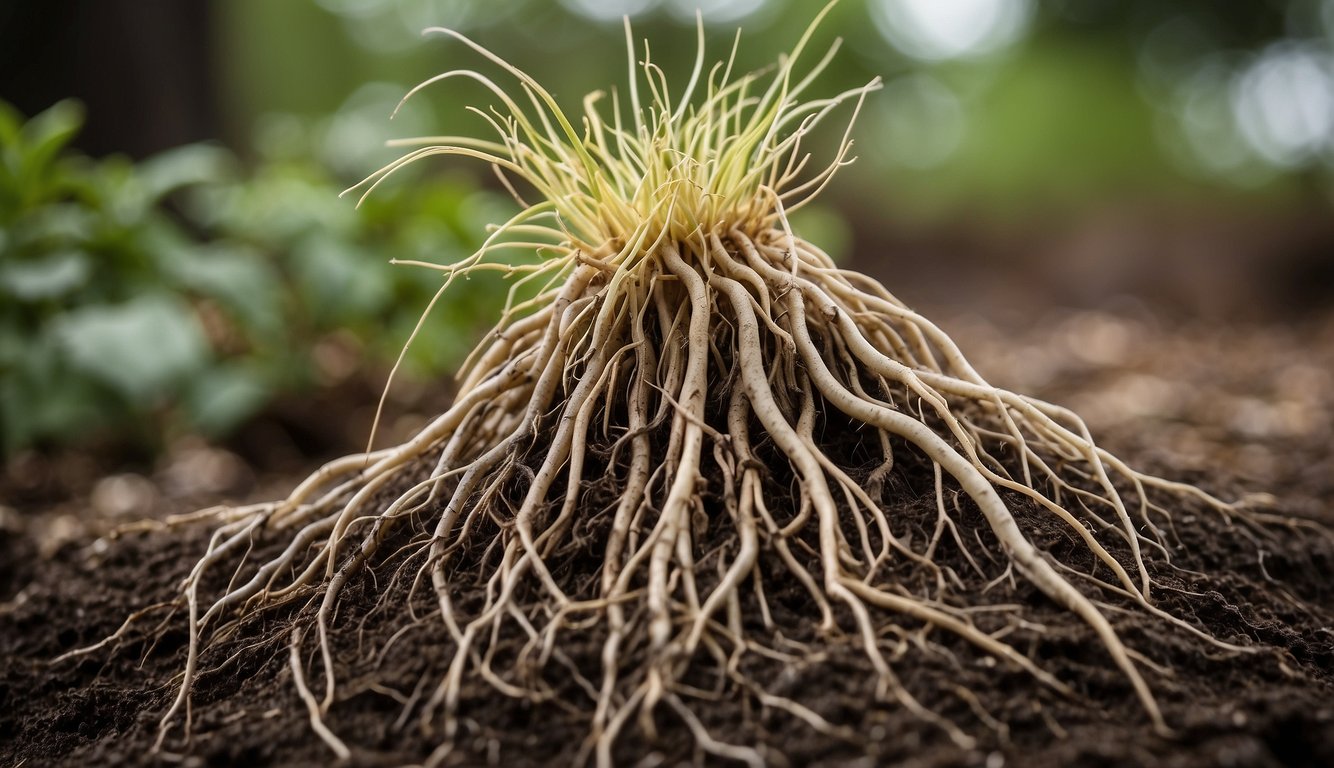
As a plant enthusiast, I know how important it is to have healthy roots. Healthy roots play a vital role in the overall growth and development of plants. They help plants absorb nutrients from the soil, anchor the plant in place, and store food and water. In contrast, root rot can be detrimental to the health of plants. Therefore, it is essential to understand the characteristics of healthy roots to prevent root rot and ensure the longevity of your plants.
Appearance and Characteristics of Healthy Roots
Healthy roots are firm and plump, indicating that they are well-hydrated and able to transport water and nutrients effectively. They are usually white or tan in color, depending on the plant species. For instance, the roots of succulents are usually white, while the roots of other plants may be light-colored or tan. Healthy roots also exhibit branching and fibrous growth, which allows them to absorb nutrients efficiently.
Good drainage and well-draining soil are crucial for the development of healthy roots. Poor drainage can lead to waterlogging, which can cause root rot. Therefore, it is important to ensure that your plants are not overwatered and that they are planted in well-draining soil.
In summary, healthy roots are firm, white or tan, and exhibit branching and fibrous growth. By understanding the appearance and characteristics of healthy roots, you can take proactive measures to prevent root rot and ensure the health and vitality of your plants.
Prevention of Root Rot – Root Rot Vs Healthy Roots

As a plant enthusiast, I understand the importance of preventing root rot. Root rot is a fungal disease that affects the roots of plants, causing them to rot and eventually die. However, with proper care, you can prevent this disease from affecting your plants. Here are some tips on how to prevent root rot:
Knowing Your Plant’s Watering Needs
One of the most important things you can do to prevent root rot is to know your plant’s watering needs. Overwatering is the main cause of root rot, so it’s important to make sure you’re not giving your plant too much water. You can use a moisture meter to determine when your plant needs water, or you can simply stick your finger into the soil to see if it’s dry. Different plants have different watering needs, so make sure you research your plant’s specific requirements.
Choosing the Right Soil – Root Rot Vs Healthy Roots
Choosing the right soil is also crucial in preventing root rot. You want to make sure your plant is in a well-draining potting mix that allows excess water to drain away from the roots. A good potting mix should contain a mixture of compost, perlite, sand, and peat moss. Avoid using heavy soils like clay or garden soil, which can retain too much moisture and lead to root rot.
Ensuring Sufficient Drainage
Proper drainage is key in preventing root rot. Make sure your plant’s container has drainage holes to allow excess water to escape. If your container doesn’t have drainage holes, you can add a layer of gravel or perlite at the bottom to help with drainage. Additionally, you can add mycorrhizal fungi to your soil, which can help your plant absorb nutrients and water more efficiently.
By following these tips, you can prevent root rot from affecting your plants. Remember to always monitor your plant’s watering needs, choose the right soil, and ensure proper drainage. With a little bit of care, your plants can thrive and stay healthy.
Before You Go – Root Rot Vs Healthy Roots
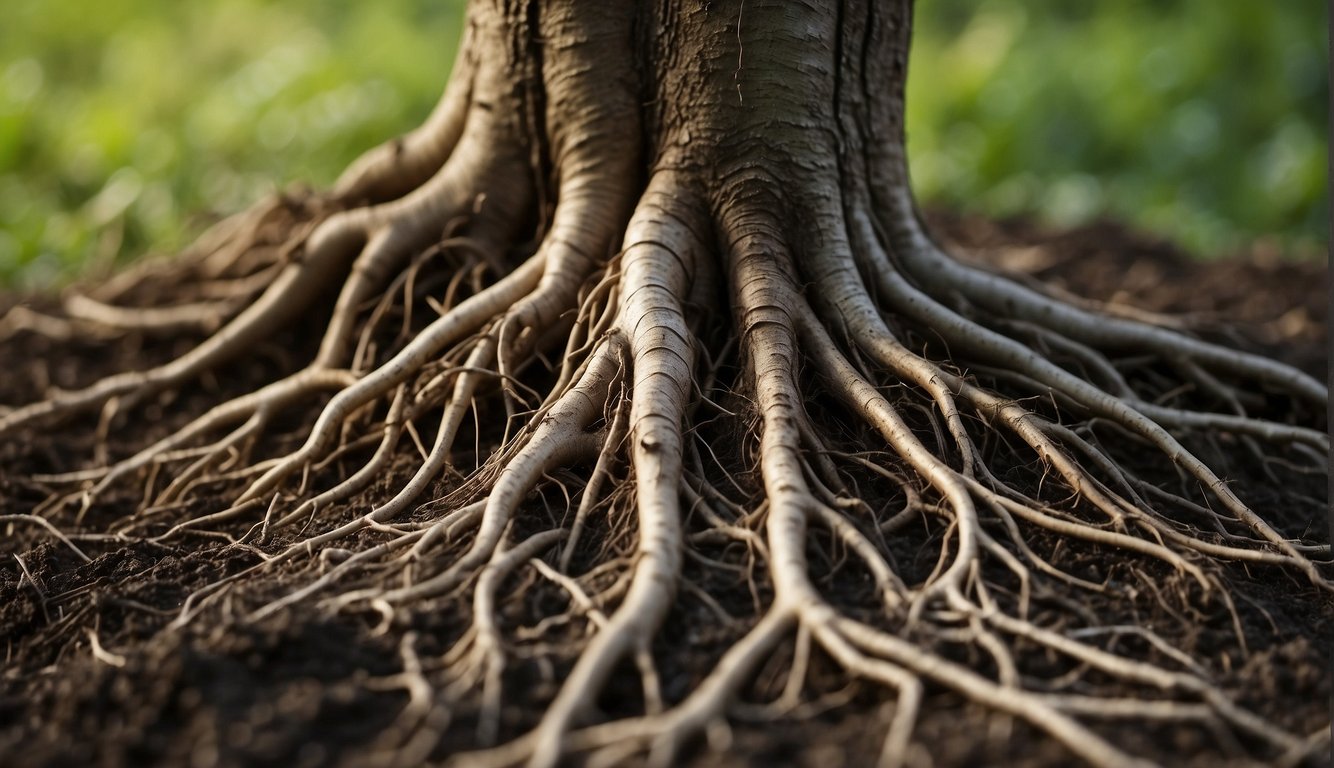
Keeping your plants’ roots healthy is crucial for their growth and survival. Root rot is a common problem that can be caused by overwatering, poor drainage, or fungal infections. It can be identified by slimy, discolored, or mushy roots.
To prevent root rot, it is important to ensure that the soil is well-draining and not waterlogged. Additionally, avoid overwatering your plants and make sure they are not sitting in standing water. Regularly inspecting your plants’ roots for any signs of rot can help catch the problem early and prevent it from spreading.
If your plants do develop root rot, there are a few treatments you can try. First, remove any affected roots and soil to prevent the spread of the fungus. Then, treat the remaining roots with a fungicide to kill any remaining spores. Be sure to follow the instructions on the fungicide carefully and avoid using too much, as this can harm your plants.
On the other hand, healthy roots are firm and plump, indicating that they are well-hydrated and able to transport water and nutrients effectively. To keep your plants’ roots healthy, make sure they are getting the right amount of water and nutrients. Additionally, avoid damaging the roots when transplanting or repotting your plants.
In summary, maintaining healthy roots is key to keeping your plants healthy and thriving. By preventing root rot and ensuring that your plants are getting the right amount of water and nutrients, you can help your plants grow strong and beautiful.
Root Rot Vs Healthy Roots: A Herbalist’s Insight
Today, we’re diving into a crucial topic – Root Rot Vs Healthy Roots. Yes, understanding the difference can be a game-changer for your garden!
First off, let’s talk about root rot. It’s a common issue that can cause your plants to wilt and die. The roots turn brown and mushy, a stark contrast to healthy roots which are firm and white.
Now, let’s tie this back to theherbprof.com. As your friendly neighborhood Herbalist Blogger, I’m all about helping you nurture your garden. And understanding the difference between root rot and healthy roots? It’s a crucial part of this journey!
By identifying root rot early, you’re not just saving your plants. You’re also embracing the principles of proactive plant care, a topic I’m passionate about and often discuss on my blog, theherbprof.com.
So, why not give it a try? Get down and dirty, inspect your plant roots, and ensure they’re healthy. Your plants (and your garden) will thank you!
References – Root Rot Vs Healthy Roots
Little Herb Encyclopedia, by Jack Ritchason; N.D., Woodland Publishing Incorporated, 1995
The Ultimate Healing System, Course Manual, Copyright 1985, Don Lepore
Planetary Herbology, Michael Tierra, C.A., N.D., Lotus Press, 1988
Handbook of Medicinal Herbs, by James A. Duke, Pub. CRP Second Edition 2007
The Complete Medicinal Herbal, by Penelope Ody, Published by Dorling Kindersley
Check the Following Articles!
Neem Oil on Vegetables: Benefits and How to Use It
Can You Grow Vegetables In Clay Soil?
Best Neem Oil: Top Picks for Natural Skin and Hair Care
Frequently Asked Questions – Root Rot Vs Healthy Roots
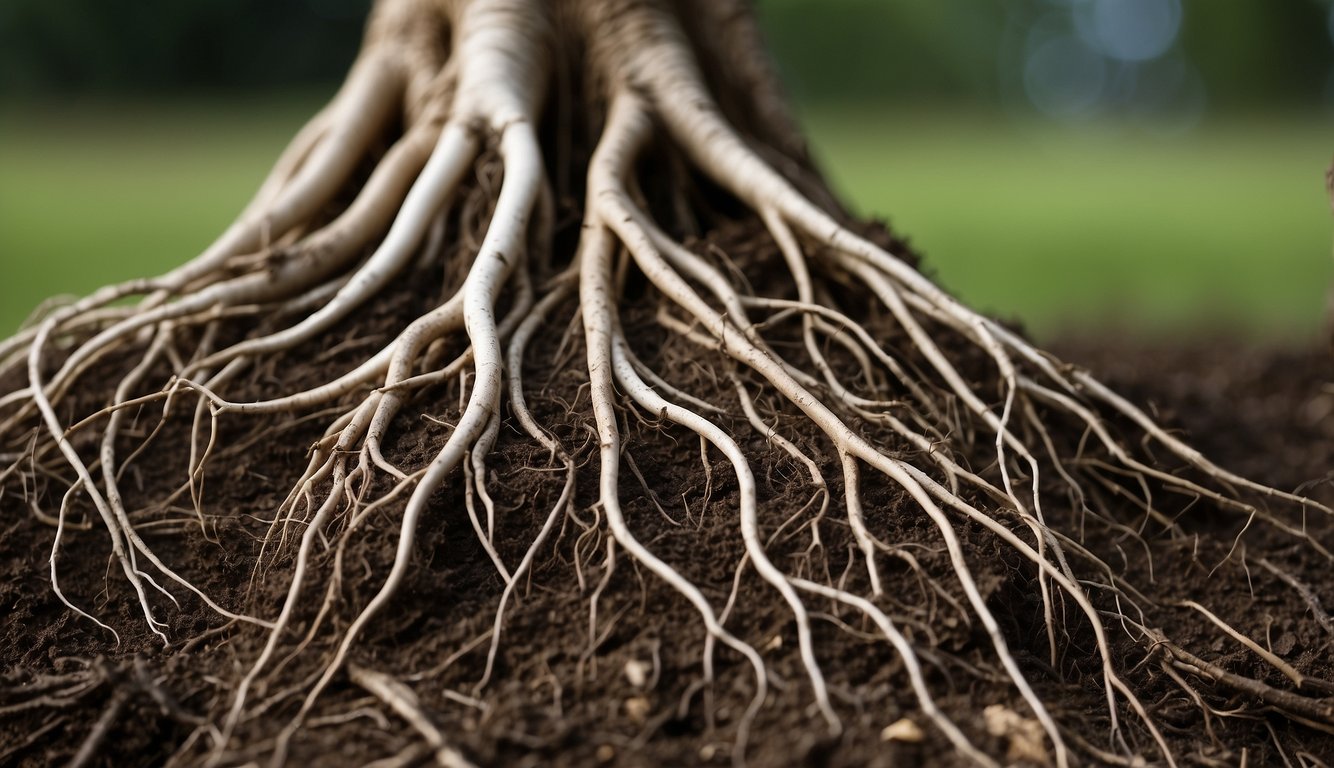
What are the distinguishing characteristics of root rot compared to healthy roots?
Root rot is a fungal infection that causes the roots of plants to become brown, mushy, and slimy. Healthy roots, on the other hand, should be firm, white, and plump. Root rot can also cause plants to wilt and yellow, and can eventually lead to the death of the plant.
Can you describe the early warning signs of root rot in plants?
Early warning signs of root rot include yellowing leaves, wilting, and stunted growth. Plants affected by root rot may also have a foul odor and exhibit a lack of new growth. If you suspect root rot, it’s important to inspect the roots of the plant for any signs of decay.
Is it possible for plants to recover from root rot without intervention?
In some cases, plants can recover from root rot without intervention if the infection is caught early and the plant is given proper care. However, in most cases, intervention is necessary to save the plant. If left untreated, root rot can spread and eventually kill the plant.
What are the most effective treatments for root rot?
The most effective treatments for root rot include removing the affected plant from the soil and trimming away any rotting roots. It’s also important to improve soil drainage to prevent the infection from spreading. Fungicides can also be used to treat root rot, but they should be used as a last resort.
How can hydrogen peroxide be used to address root rot?
Hydrogen peroxide can be used to address root rot by adding a small amount of the solution to the plant’s water. This can help to kill off harmful bacteria and fungi that may be causing the infection. However, it’s important to use hydrogen peroxide in moderation, as too much can harm the plant.
What are the common causes of root rot in houseplants and garden plants?
The most common causes of root rot in houseplants and garden plants are overwatering and poor soil drainage. Overwatering can cause the roots to become waterlogged and lead to the growth of harmful bacteria and fungi. Poor soil drainage can also cause water to accumulate around the roots, leading to root rot.
